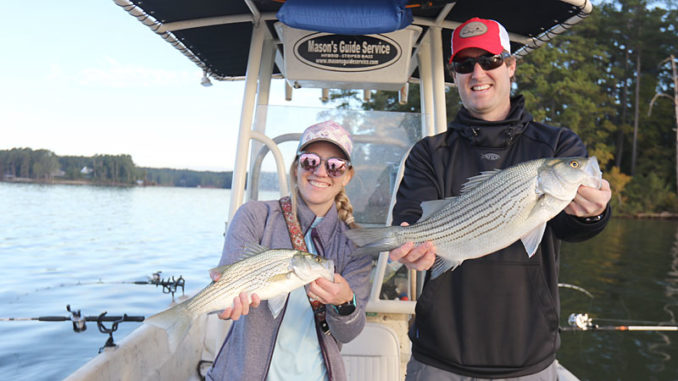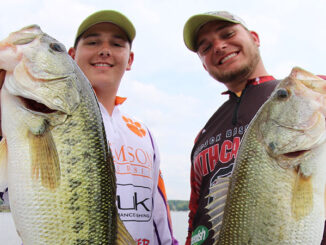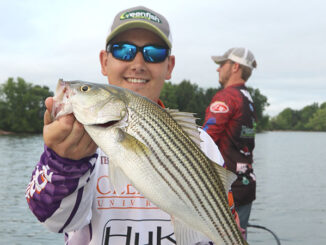
Live bait is the key to Clarks Hill stripers
For guide Eddie Mason of Modoc, S.C., February is just another month on Clarks Hill, where stripers and hybrids can’t resist live bait fished on down lines no matter the weather.
“It’s all a matter of finding fish that are willing to bite. Sometimes that happens right away first thing in the morning. Other times, you might have to try a few spots before you get a few fish in the boat,” said Mason, who operates Mason’s Guide Service.
With more than 20 years of experience chasing stripers and hybrids, he’s got a pretty good handle on where to start each morning.
“It changes from day to day, but when you fish several times a week, you get a good feel for what the fish are doing and where they are and at least have a good idea of where to start each day,” said Mason (706-829-0428).
And once he’s got a spread of baited rods in rod holders around his boat, he’ll give the fish about 15 minutes. If he doesn’t catch at least one fish in that time, he reels in and moves to another spot. He’ll repeat this process until he’s on the fish. If he doesn’t catch anything right away, he’s usually got them biting by his third spot.
Keep fresh bait on the line
“These fish will bite like this year-round. Live bait on down lines is a fool-proof method on Clarks Hill for stripers and hybrids,” he said.
But one thing that isn’t fool-proof, he said, is where to fish.
“There’s no secret spot to go and know you’ll catch fish. These fish move around a lot, so you just have to stay on them from day to day. You can find them on your electronics, then just drop bait to them and see if they’re ready to eat. They don’t really have a favorite place; they’re just following the bait. But you do it enough and you’ll get a feel for what to look for,” he said.
Rather than toss out an anchor each time he stops to fish, Mason uses the anchor locking feature on his trolling motor. This saves time and keeps from disturbing the fish. And instead of holding the rod ready to set the hook, he advises anglers to leave the rod in the rod holder until it doubles over. Then he says it’s best to reel fast enough to feel the fish, hold the rod tip up, and keep reeling.
Mason also checks his bait often to keep it fresh.
“If a fish hits a bait but doesn’t take it, reel that in and put a fresh bait on,” he said. “Fresh bait is key to catching these fish.”





Be the first to comment